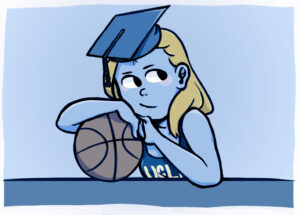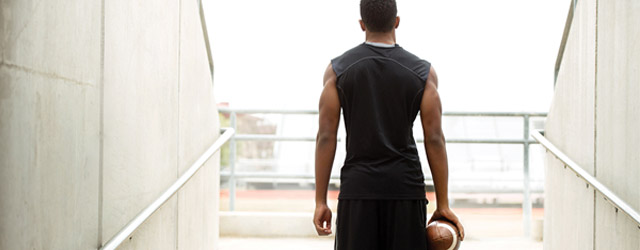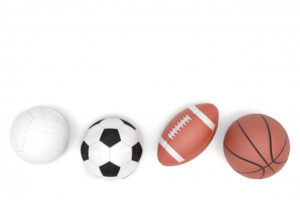Most athletes think the athletic recruiting process is just like the movies: I show up at a tournament or national ID camp, a college coach discovers me out of the hundreds of kids that are there, the coach offers me a full ride scholarship, I go to the Division 1 college of my dreams, etc.
The reality is that most college athletes learn how to actively promote themselves along the way. Most college athletes do not attend Div. 1 universities, and instead attend Div. 2, 3, NAIA, or Junior Colleges. Successful college athletes often start the process early and take responsibility for their own athletic recruiting. They gather as much information as they can and put in the work to promote themselves. They set both athletic and academic goals and reach out to those colleges and coaches that are the best fit.
How do Prospective Student Athletes get recruited for their sport?
Your recruiting journey will likely be your own, even as compared to someone on your own team. Prospective student athletes get recruited in a multitude of ways, but there are two primary avenues that high school athletes can utilize to take charge of their recruiting process and present themselves in the best possible light:
Make contact with college coaches
This includes email, phone calls, filling out online questionnaires and other written communication. Many college coaches don’t even begin recruiting you until you fill out their questionnaire, send an email, or make a phone call, and we happen to have a College Coach Outreach Guide filled with useful tips on how to carry yourself in these exchanges! Make sure you’re thinking about the level you would like to participate at athletically, and be realistic, for good or for bad. Remember that at the end of the day, it’s up to college coaches to decide what level you are at.
There are many options that student athletes and parents may not even be considering, which includes NCAA Div. 1, Div. 2, Div. 3, NAIA and Junior College. Once you’ve accurately determined what level you’re at, you can start exploring your options, which aren’t quite as limited as you may think.
You’re probably very familiar with the NCAA, but you might not know that the NAIA is made up of smaller colleges and universities that function much like Div. 2, often with fewer restrictions, and these schools offer athletic scholarships. Similarly, Junior Colleges (NJCAA) are 2 year institutions that have lower tuition rates and can provide students an opportunity to improve their grades and then transfer to a NCAA or NAIA school. Explore all of your options and don’t count anything out. Current media drama aside, Aaron Rodgers started at Butte Community College after only being offered a walk-on spot by Illinois, then transferred to Cal, and now he’s doing pretty well for himself.
Make campus visits
Visit colleges when you are traveling, contact those college coaches and let them know you will be on campus. College coaches want to hear from you and they want to know you are interested in their program. Take responsibility for your athletic recruiting process early and go explore college campuses!
Once you meet the coaches, they will take a deep dive and look at the athletic, academic and character of the student athletes they are recruiting. They will talk to club and high school coaches. Then they will extend offers and get commitments from prospective student athletes based upon the needs of their programs, and these offers can vary from a full ride to a partial scholarship to a walk-on offer. They also can be combined with academic merit aid in some sports at some of the levels.
To make this process easier, we’ve developed a handy list of 10 steps that you can take to ensure that you make the most of your campus visits!

Important note: Know the high school courses and GPA you will need to participate by checking the NCAA Eligibility Center. The NCAA is not requiring standardized test scores this year, but know that many of the NCAA universities will require you to have them. Understand what you need to accomplish in high school academically to be able to participate in the NCAA.
Everyone’s recruiting journey will look different, but with perseverance and hustle you can make your goal of becoming a student athlete a reality. Let college coaches know you are interested in their university, because otherwise the ball will remain forever in your court. Stay motivated and persistent!
As always, you can reach out to Stephanie Barth, our resident Student Athlete Coach, at stephanie@oncampuscollegeplanning.com for further student athlete guidance!



Recent Comments